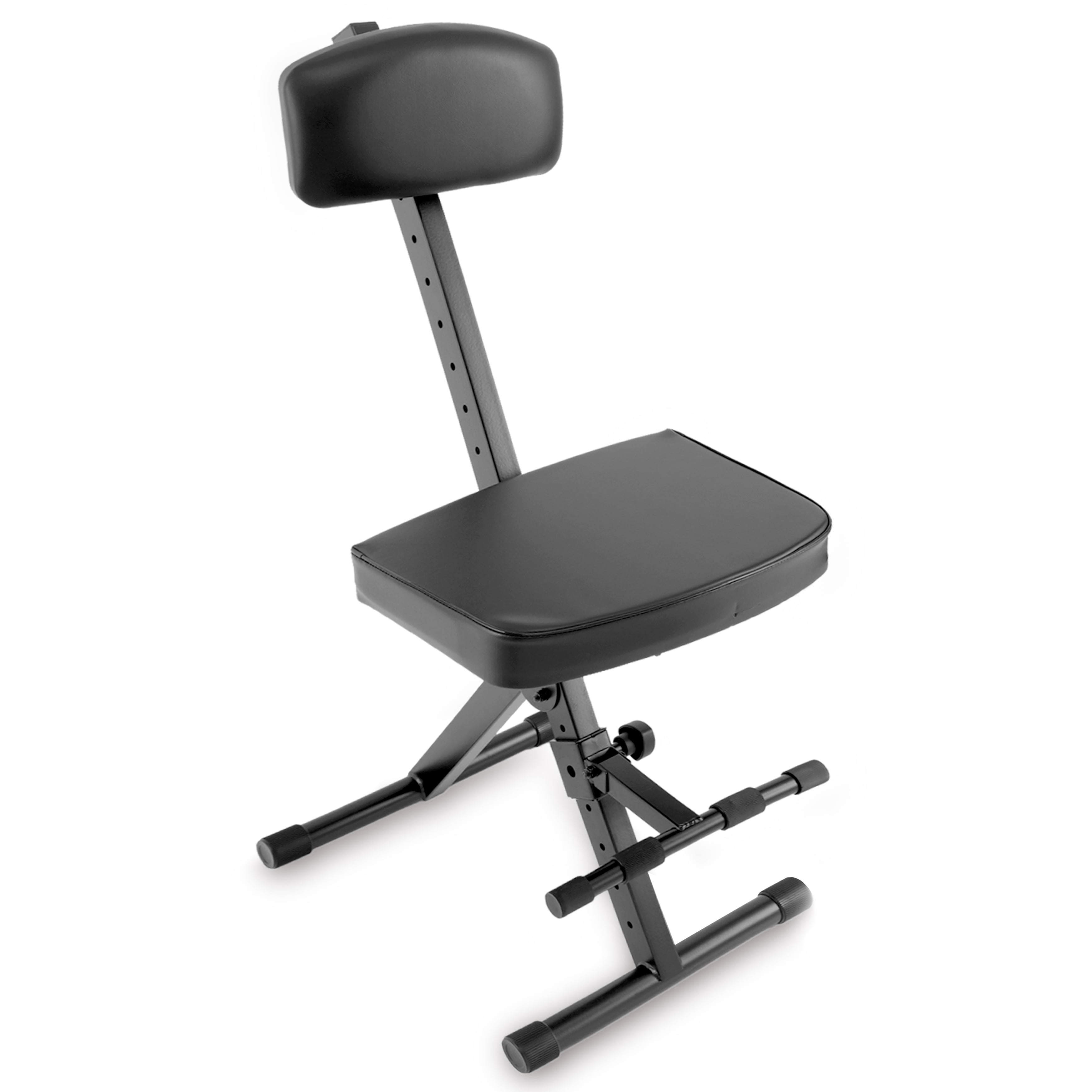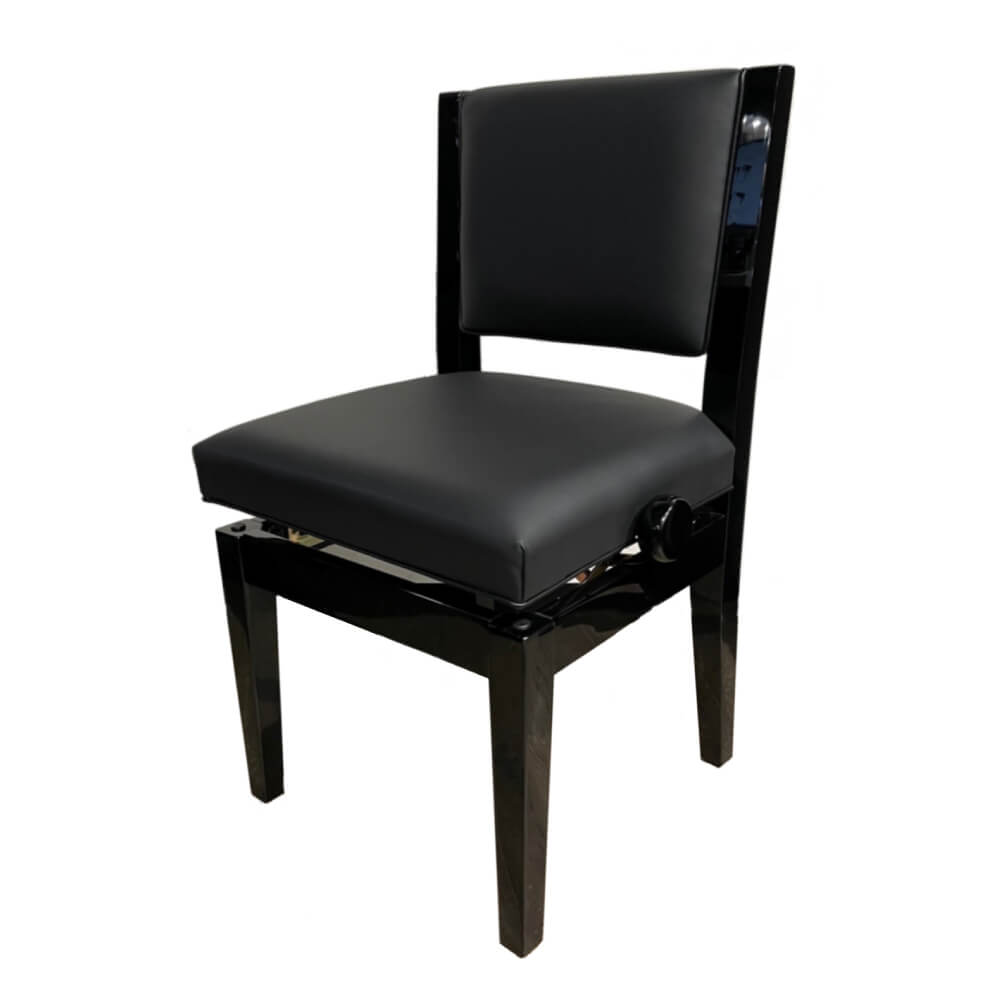Types of Piano Chairs with Back Support

A piano chair with back support offers comfort and ergonomic benefits, enhancing your playing experience and reducing the risk of back pain or fatigue. These chairs come in various styles, each with unique features to cater to different needs and preferences.
Types of Piano Chairs with Back Support, Piano chair with back support
The following table summarizes the different types of piano chairs with back support, highlighting their features, advantages, and drawbacks.
| Type | Features | Pros | Cons |
|---|---|---|---|
| Adjustable Height | Allows for height adjustment to accommodate pianists of different heights. | Customizable height for optimal posture and comfort. | May require frequent adjustments depending on the pianist’s height. |
| Swivel | Rotates smoothly, allowing the pianist to turn and face different directions. | Enhanced mobility and flexibility for turning pages or interacting with other musicians. | May be less stable than fixed chairs, especially during vigorous playing. |
| Folding | Can be folded for easy storage and transport. | Space-saving and convenient for portability. | May be less sturdy than non-folding chairs. |
Specific Needs of Different Pianists
Different pianists have varying needs based on their playing style, height, and physical limitations. For example, a tall pianist may require a chair with a higher adjustable height to maintain proper posture and reach the keys comfortably. A pianist with back pain may benefit from a chair with a contoured backrest and lumbar support. Folding chairs are ideal for pianists who need to transport their chair frequently or have limited storage space.
Importance of Back Support for Pianists: Piano Chair With Back Support

Playing the piano requires extended periods of sitting, which can put significant strain on the back, especially if proper posture and support are not maintained. Back support for pianists is crucial for maintaining a healthy posture, preventing injuries, and promoting comfort during long practice sessions.
Ergonomic Benefits of Back Support
Back support plays a vital role in maintaining proper posture and minimizing strain on the back. When pianists sit with adequate back support, their spine is aligned correctly, reducing the risk of developing musculoskeletal problems. This ergonomic advantage helps distribute weight evenly, preventing undue pressure on specific areas of the back, particularly the lower back and neck. The correct posture allows for efficient movement and control of the arms and hands, enhancing playing technique and reducing the risk of repetitive strain injuries.
Preventing Injuries and Promoting Comfort
Maintaining proper posture and using a piano chair with back support can significantly reduce the risk of injuries, especially for pianists who practice for extended periods. Poor posture can lead to back pain, neck pain, and even carpal tunnel syndrome. A supportive piano chair allows pianists to sit comfortably and maintain a neutral spine, minimizing strain on the muscles and joints.
Choosing the Right Back Support
The right back support for a piano chair is essential for comfort and injury prevention. Here are some factors to consider when choosing a piano chair with back support:
- Height Adjustability: The chair should be adjustable to ensure the pianist’s feet are flat on the floor and their thighs are parallel to the floor. This allows for proper posture and reduces strain on the back and legs.
- Backrest Height and Angle: The backrest should provide adequate support for the lower back and be adjustable to accommodate different heights and preferences. The backrest angle should encourage a slightly reclined posture, promoting comfort and reducing strain on the spine.
- Seat Depth and Width: The seat should be deep enough to provide adequate support for the thighs and wide enough to prevent discomfort or pressure points. The seat material should be comfortable and breathable to prevent excessive sweating.
- Stability and Durability: The chair should be stable and durable to withstand the weight and movement of the pianist. It should also have a solid base to prevent rocking or tipping.
Features and Considerations for Piano Chairs with Back Support

Choosing the right piano chair with back support is crucial for pianists of all levels, as it directly impacts posture, comfort, and playing performance. Several features should be considered when selecting a chair that provides optimal support and enhances the playing experience.
Seat Height Adjustability
The ability to adjust the seat height is essential for finding the ideal playing position. The correct seat height ensures that the pianist’s elbows are at a 90-degree angle, promoting proper posture and minimizing strain on the wrists and shoulders. Adjustable chairs allow for customization to fit different body sizes and playing preferences.
Backrest Height and Angle
The backrest’s height and angle are critical for providing proper spinal support and maintaining a comfortable playing posture. A backrest that is too high can restrict movement and cause discomfort, while one that is too low may not provide adequate support. The ideal backrest should be adjustable to accommodate different heights and allow for slight adjustments to the angle for personalized comfort.
Material Quality
The materials used in constructing a piano chair with back support directly affect its durability, comfort, and overall quality. High-quality materials like leather, wood, or high-density foam ensure a sturdy and comfortable seating experience. Leather upholstery is known for its durability and breathability, while wood frames provide stability and a classic aesthetic. Foam padding should be dense enough to provide adequate support without being too firm or too soft.
Examples of Piano Chairs with Back Support
- Adjustable Piano Bench with Backrest by Rondo: This bench features a sturdy wooden frame, adjustable seat height, and a contoured backrest for optimal comfort and support. The padded seat and backrest are covered in high-quality leatherette for a luxurious feel.
- The Maestro Piano Chair by Stagg: This chair offers adjustable seat height and backrest angle, allowing for customized comfort. It features a padded seat and backrest with breathable fabric upholstery. The Maestro chair is known for its sturdy construction and modern design.
- The Classic Piano Bench with Backrest by Yamaha: This bench features a traditional design with a comfortable padded seat and backrest. It is adjustable in height and offers a stable and reliable seating experience. The Yamaha Classic Piano Bench is a popular choice among pianists for its durability and timeless aesthetic.
Importance of Proper Fit and Comfort
Proper fit and comfort are crucial for a piano chair with back support. The chair should provide adequate support for the back, hips, and thighs, while allowing for comfortable movement during playing. The seat should be firm enough to provide support but not too hard to cause discomfort. The backrest should be adjustable to allow for personalized comfort and proper spinal alignment.
“Choosing a piano chair with back support that fits well and is comfortable is essential for maintaining proper posture and minimizing fatigue during extended playing sessions.”